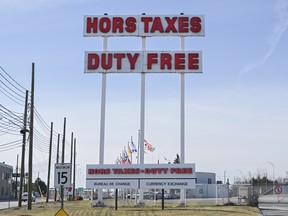
Article content
Around the world, people are waking up to the benefits of freer trade. After years of free-trade fatigue and growing protectionism, a majority of Americans now say the United States should pursue global free trade, while the European Union is striking free trade deals as fast as it can. Even regional geopolitical rivals China, South Korea and Japan have agreed to greater co-operation.
THIS CONTENT IS RESERVED FOR SUBSCRIBERS ONLY
Subscribe now to read the latest news in your city and across Canada.
- Exclusive articles from Barbara Shecter, Joe O'Connor, Gabriel Friedman, and others.
- Daily content from Financial Times, the world's leading global business publication.
- Unlimited online access to read articles from Financial Post, National Post and 15 news sites across Canada with one account.
- National Post ePaper, an electronic replica of the print edition to view on any device, share and comment on.
- Daily puzzles, including the New York Times Crossword.
SUBSCRIBE TO UNLOCK MORE ARTICLES
Subscribe now to read the latest news in your city and across Canada.
- Exclusive articles from Barbara Shecter, Joe O'Connor, Gabriel Friedman and others.
- Daily content from Financial Times, the world's leading global business publication.
- Unlimited online access to read articles from Financial Post, National Post and 15 news sites across Canada with one account.
- National Post ePaper, an electronic replica of the print edition to view on any device, share and comment on.
- Daily puzzles, including the New York Times Crossword.
REGISTER / SIGN IN TO UNLOCK MORE ARTICLES
Create an account or sign in to continue with your reading experience.
- Access articles from across Canada with one account.
- Share your thoughts and join the conversation in the comments.
- Enjoy additional articles per month.
- Get email updates from your favourite authors.
THIS ARTICLE IS FREE TO READ REGISTER TO UNLOCK.
Create an account or sign in to continue with your reading experience.
- Access articles from across Canada with one account
- Share your thoughts and join the conversation in the comments
- Enjoy additional articles per month
- Get email updates from your favourite authors
Sign In or Create an Account
or
Article content
Article content
The threat of a global tariff war has reminded people that everyone is better off when countries specialize in what they’re best at. This rosy view is a stark contrast to the vision of trade as a zero-sum game — one other countries typically win. Free trade does have real downsides. While automation also played a big role in reducing manufacturing employment, images of the American “Rust Belt” have come to stand for the negative impacts of free trade not only with U.S. voters but also globally. Factories have been silenced and once-proud communities devastated as corporations have shifted manufacturing offshore.
Article content
Article content
By signing up you consent to receive the above newsletter from Postmedia Network Inc.
Article content
But both things can be true. The benefits and costs of free trade don’t land equally. Wealthy countries benefit relatively less from freer trade, and parts of their workforce carry a disproportionate burden. Even so, peer-reviewed research by Copenhagen Consensus economists shows that, when the balance is taken, freer trade is still overwhelmingly good even for rich countries.
Article content
The researchers’ economic model investigates what happens if we were to grow global trade by five per cent. Yes, there are real and substantial costs. Across the entire world, for all workers and into the future, the present-day cost would be almost one trillion dollars. That comes from adding up the impacts to the wage packets of affected workers who lose their jobs, have to downsize to lower-paid roles or end up abandoning the workforce altogether.
Article content
Article content
Some 92 per cent of that cost occurs in developed countries, which is not surprising: that’s where most of the import-exposed markets are. It’s also where wages are highest and workers are most at risk from cheaper or better products from poor countries. These losses are real — a trillion dollars is a vast sum to anyone.
Article content
Article content
But we also need to remember the substantial benefits of free trade. The same shift that saw factories leave former industrial centres also drove economies of scale and allowed consumers everywhere to buy cheap and well-made products from big-box stores.
Article content
Middle-class Americans gain an estimated 29 per cent of their purchasing power from foreign trade. In other words, the average middle-class American can buy nearly one-third more for each dollar spent than if there were no trade. The effect is even bigger — 62 per cent — for the poorest tenth of American consumers.
Article content
For the OECD countries, the benefits of free trade are $6.7 trillion — much higher than the $1 trillion in costs. In effect, each dollar of cost returns almost $7 of benefit. Yes, governments should work harder to help the workers who would be most hurt by freer trade, but even subtracting out the costs, there are over $6 trillion in benefits to be enjoyed across the rich world. Any government would be foolish to ignore these much larger net benefits.

.jpg) 3 hours ago
1
3 hours ago
1
 English (US)
English (US)